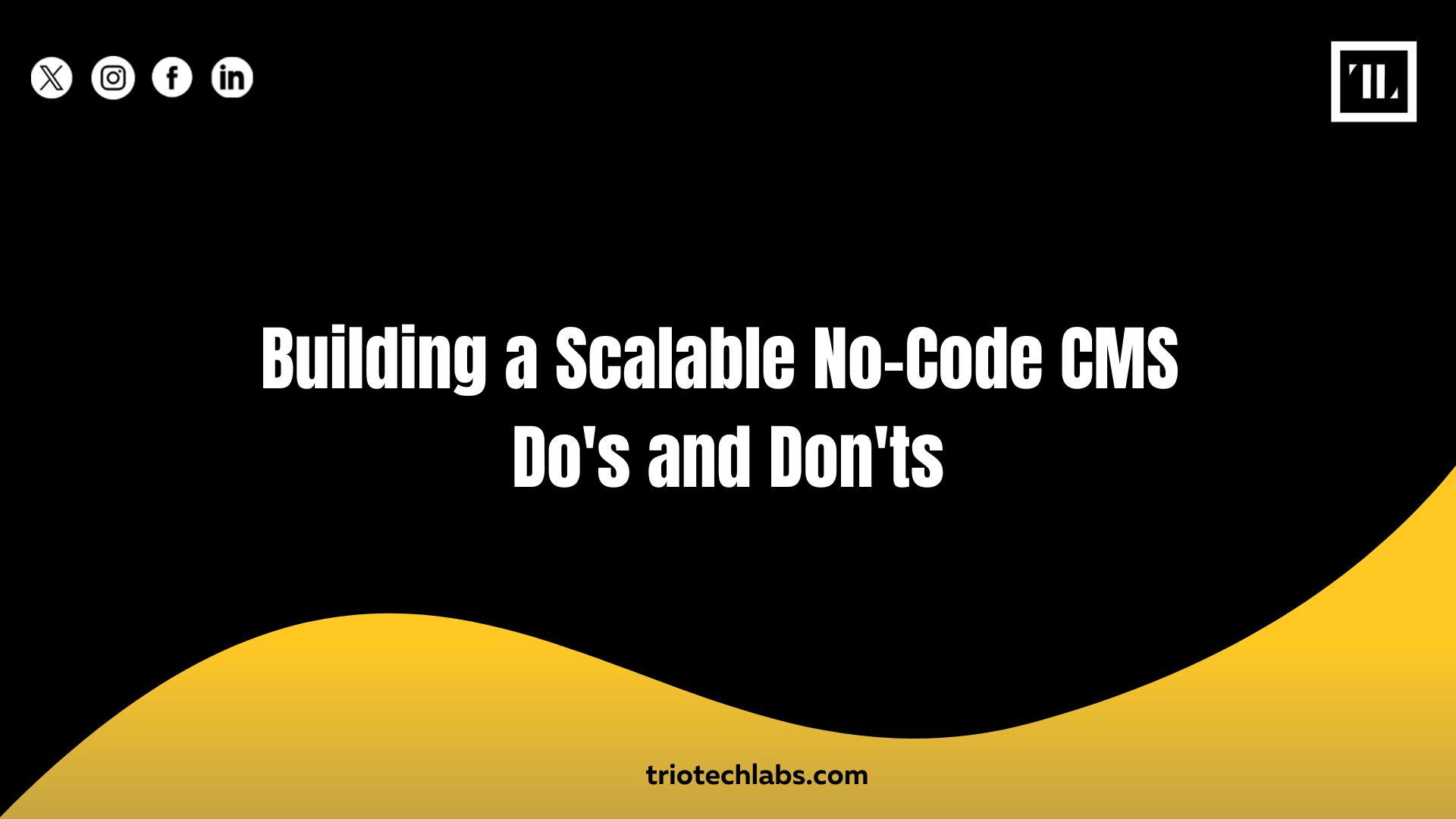
Creating a scalable content management system using no code tools requires careful planning and disciplined execution. While platforms like Webflow, Airtable, and Notion offer flexibility, they can become difficult to maintain without a clear structure. This guide outlines practical actions to take and mistakes to avoid when building a no code CMS that can grow with your business needs.
No Code CMS: What to Adopt or Avoid
A no code CMS should offer long term usability, not just a quick build. The foundation you set at the beginning determines how scalable and maintainable your system will be. Below are structured recommendations categorized as best practices and common mistakes.
Best Practices for Building a Scalable No Code CMS
1. Establish a Structured Content Model Before Development
Begin with a clear understanding of your content types. Identify what data each type needs and how they relate. Define fields such as title, image, summary, and metadata early. This reduces rework and supports consistent page generation.
2. Use Consistent and Descriptive Naming for Fields and Collections
Label every field clearly and apply the same naming format across all collections. Avoid vague or inconsistent labels. This improves readability and reduces onboarding time for new users managing the CMS.
3. Integrate Automation Tools for Routine Operations
Leverage tools like Zapier or Make to automate content publishing, database syncing, and team notifications. Automation reduces manual errors and improves operational efficiency as your site scales.
4. Maintain a Clear Separation Between Content and Design
Avoid embedding content directly into layout elements. Use collection-based content and dynamic elements to keep your design adaptable. This ensures future redesigns or platform updates can be handled without restructuring the entire site.
5. Optimize Assets and Manage External Content Carefully
Compress all media before uploading. Large images and excessive third party content can degrade performance. Limit external embeds and track their impact on page speed using tools like PageSpeed Insights or Lighthouse.
6. Develop Modular Components for Reuse Across Pages
Create flexible components such as cards, call to action sections, or testimonial blocks that can be reused across the site. This enables scalable design consistency and reduces duplication of effort.
Common Pitfalls to Avoid When Scaling a No Code CMS
1. Relying On One Platform For All Functionality
Do not attempt to force a single no code tool to handle tasks beyond its intended scope. For example, using a visual CMS for relational databases is not optimal. Use dedicated tools like Airtable or backend-as-a-service platforms when needed.
2. Using Embed Codes Or Custom Scripts As Workarounds
Temporary workarounds using code snippets may solve a problem short term but can introduce long term complications. Avoid relying on embedded code for core functionality as it reduces maintainability and can break with updates.
3. Assigning The Same Access Level To All Users
User management is critical. Assign access based on role and responsibility. Not every user should have permissions to edit structures or workflows. Proper access control protects your system from accidental changes.
4. Neglecting Documentation Of Workflows And Integrations
Document every workflow, field purpose, and third party connection. This includes naming conventions, automation logic, and dependencies. A lack of documentation slows down troubleshooting and hinders knowledge transfer.
5. Delaying Performance Optimization Until Issues Arise
Monitor performance metrics regularly. Waiting until pages slow down before optimizing leads to lost visitors and search ranking declines. Make site performance a routine part of your CMS maintenance.
Conclusion
A no code CMS can be a powerful asset if built with scalability in mind. By following a structured approach and avoiding common mistakes, you ensure the system remains efficient, adaptable, and easy to manage over time. Whether you are building for internal use or client delivery, these guidelines apply across industries and tools.
For organizations looking to implement scalable web platforms or CRM systems, TRIOTECH LABS offers development services that integrate structured no code solutions with long term digital growth in mind.
